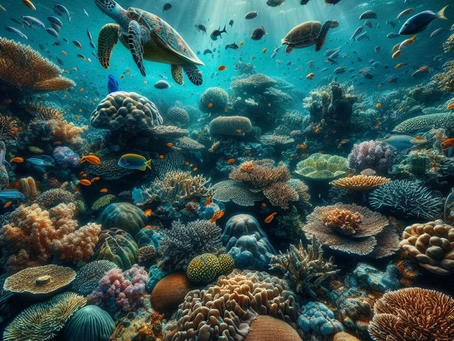The Vital Role of Marine Sanctuaries in Ocean Conservation
Marine sanctuaries represent one of our most effective tools for protecting ocean biodiversity while simultaneously enhancing ecosystem resilience against climate change and human impacts. These designated protected areas create safe havens where marine species can thrive without the pressures of overfishing, habitat destruction, and pollution. Beyond their conservation value, sanctuaries deliver significant benefits to human communities through enhanced fisheries, coastal protection from storms and erosion, and opportunities for research, education, and sustainable tourism. By safeguarding critical habitats and allowing ecosystems to function naturally, marine sanctuaries help maintain the ocean’s life-support systems that ultimately benefit both marine life and human societies.
Key Benefits of Marine Sanctuaries
- Protect endangered species and maintain biodiversity
- Enhance ecosystem resilience to climate change
- Support sustainable fisheries through spillover effects
- Provide natural coastal protection from storms and erosion
- Offer opportunities for scientific research and education
- Support local economies through sustainable tourism
Biodiversity Conservation and Ecosystem Protection
Marine sanctuaries serve as critical refuges for marine life at multiple levels.
Protecting Endangered Species
Sanctuaries provide essential habitat for threatened and endangered species, allowing populations to recover and stabilise. By eliminating or strictly regulating human activities like fishing and extraction, these areas create safe spaces where vulnerable species can breed, feed, and migrate without disturbance.
Maintaining Ecosystem Balance
Healthy marine ecosystems depend on complex relationships between species and their environment. Sanctuaries protect these intricate connections by preserving entire ecosystems rather than focusing on single species, ensuring that ecological processes like nutrient cycling, predation, and competition continue functioning naturally.
Reversing Wildlife Decline
By providing protected spaces free from human pressures, sanctuaries enable depleted populations to rebound. This recovery often extends beyond sanctuary boundaries as thriving populations spill over into adjacent areas, helping to reverse broader wildlife declines throughout regional ecosystems.
Climate Resilience and Coastal Protection
Marine sanctuaries play a crucial role in mitigating and adapting to climate change impacts.
Natural Buffers Against Storms
Coral reefs, mangrove forests, and other protected habitats within sanctuaries act as natural breakwaters, absorbing wave energy and reducing storm damage to coastal communities. This protection becomes increasingly valuable as climate change intensifies storm frequency and severity.
Combating Sea Level Rise and Erosion
Healthy coastal ecosystems within sanctuaries help stabilise shorelines and build sediment, reducing vulnerability to sea level rise and erosion. These natural defences often provide more sustainable and cost-effective protection than engineered solutions.
Carbon Sequestration
Many marine ecosystems protected within sanctuaries, particularly mangrove forests, seagrass meadows, and salt marshes, excel at capturing and storing carbon, making them valuable allies in climate change mitigation efforts.
Fisheries Support and Sustainable Harvesting
Well-designed marine sanctuaries benefit both conservation and fishing communities.
Refuge for Fish Populations
Sanctuaries provide protected areas where fish can grow to maturity and reproduce without fishing pressure, helping to maintain healthy population levels and genetic diversity that benefit broader fishery resources.
Spillover Benefits
As fish populations within sanctuaries increase, they naturally expand into surrounding areas, enhancing catches for fishermen operating near protected area boundaries. This spillover effect helps maintain sustainable harvests while protecting breeding stocks.
Sustainable Fishing Practices
By demonstrating the benefits of ecosystem protection, sanctuaries encourage adoption of more sustainable fishing practices throughout regions, promoting long-term fishery health and productivity.
Research, Education and Community Engagement
Marine sanctuaries serve as living laboratories and educational resources.
Scientific Research Opportunities
Protected areas provide baseline environments where scientists can study marine ecosystems with minimal human disturbance, yielding valuable insights into natural processes and human impacts.
Educational Programs
Sanctuaries offer exceptional settings for hands-on learning about marine science and conservation, inspiring future generations of ocean stewards through school programs, visitor centres, and guided activities.
Citizen Science Initiatives
Many sanctuaries engage volunteers in monitoring and research activities, increasing public understanding of marine ecosystems while generating valuable scientific data.
Implementation and Management Considerations
Effective sanctuary management requires addressing several key challenges.
Enforcement and Compliance
Successful sanctuaries require adequate monitoring and enforcement to prevent illegal activities, often employing a mix of traditional patrols and modern technologies like satellite surveillance and acoustic monitoring.
Balancing Multiple Uses
Careful zoning and management planning can allow compatible human activities like research, education, and certain forms of low-impact tourism while still achieving conservation objectives.
Sustainable Funding
Long-term success depends on secure funding mechanisms that may include government appropriations, user fees, conservation trust funds, and public-private partnerships.

